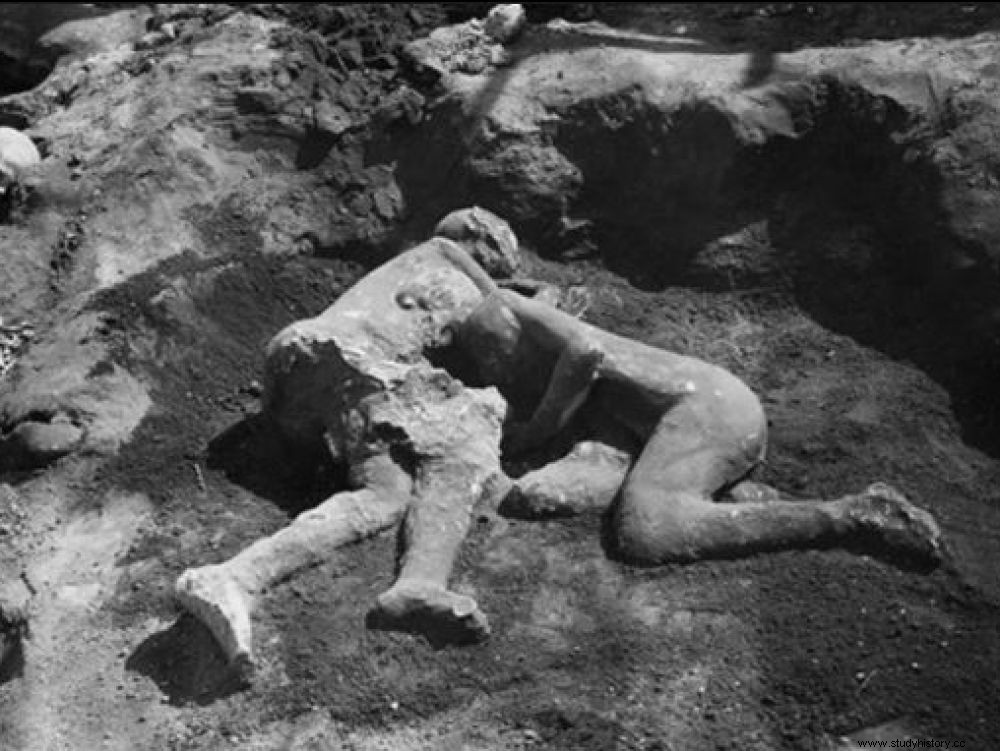Genetic analyzes carried out on a couple of victims of the eruption of Vesuvius, qualified as lovers since 1922, indicate that they would be two men.

"Embracing" couple discovered in the Cryptoporticus villa at the archaeological site of Pompeii.
Since their discovery in 1922, two "entwined" bodies found in the house of Cryptoporticus, at the site of Pompeii, Italy, had been described as that of a man and a woman who died in a fatal embrace during the terrible eruption of Vesuvius in AD 79. Love and atrocious end were immediately associated in a romantic way. Then, as reported by the Italian daily Corriere del Mezzogiorno in its edition of April 10, 2017, the hypotheses evolved over time to try to imagine who could be these beings whose head of one rested on the chest of the other as shown by the plaster cast made according to the method developed in 1863 by archaeologist Giuseppe Fiorelli. Instead of a man and a woman, two women were preferred, perhaps a mother trying to protect her daughter...
A homosexual couple?
But a twist! Recent scans and DNA analysis of the teeth and human remains kept inside the two casts have just revealed…they were in fact two men aged 18 and 20! Enough to feed, 2000 years apart, a new hypothesis:that of a homosexual couple, as Massimo Osanna himself mentioned, the director of the Superintendence of Pompeii:"We cannot say that the two characters were lovers, but given their position, it can be assumed ... while not being able to certify it ". What Stefano Vanacore, director of the Pompeii archeology laboratory nuanced in The Telegraph "We are talking about assumptions that can never be verified. What is certain is that the two men are not parents, nor brothers, nor father and son ". One of the two DNA being very damaged, it is not excluded that a fourth hypothesis will one day sweep the other three. In any case, it is remarkable to note the new possibilities for genetic analyzes now offered by the human remains preserved in the 103 casts made in Pompeii since the end of the 19 th century.
